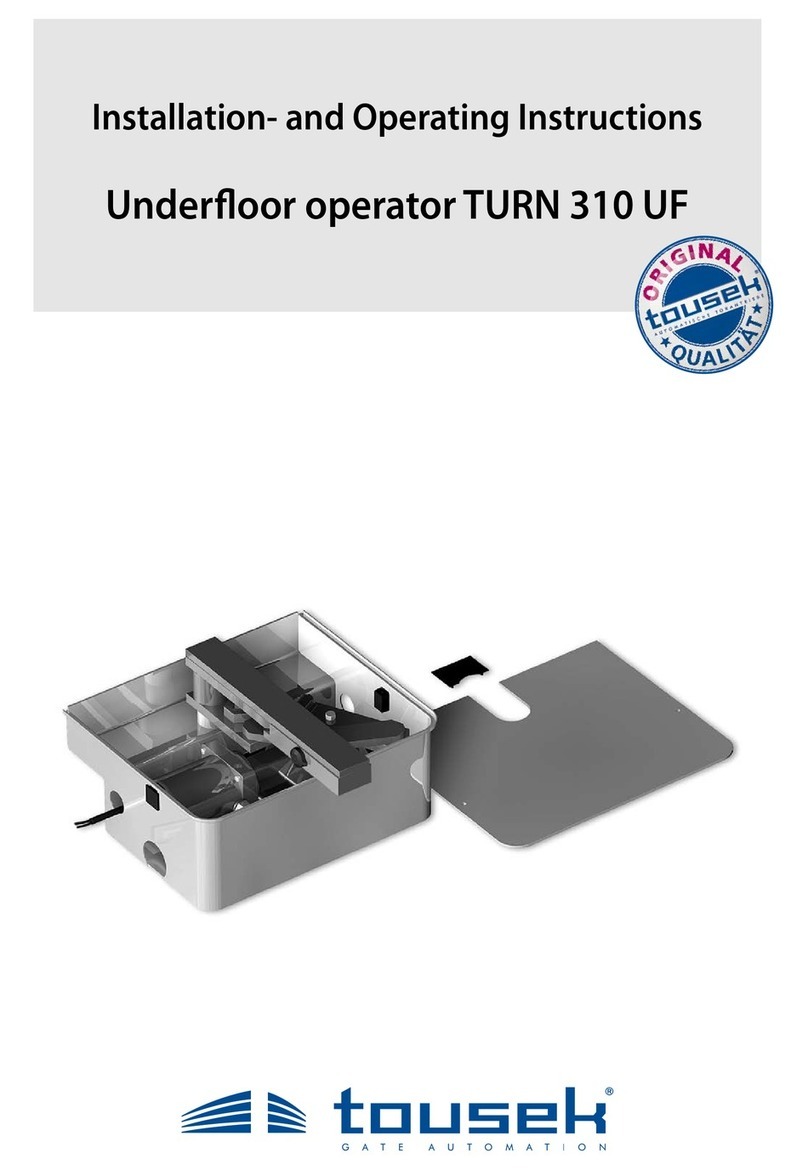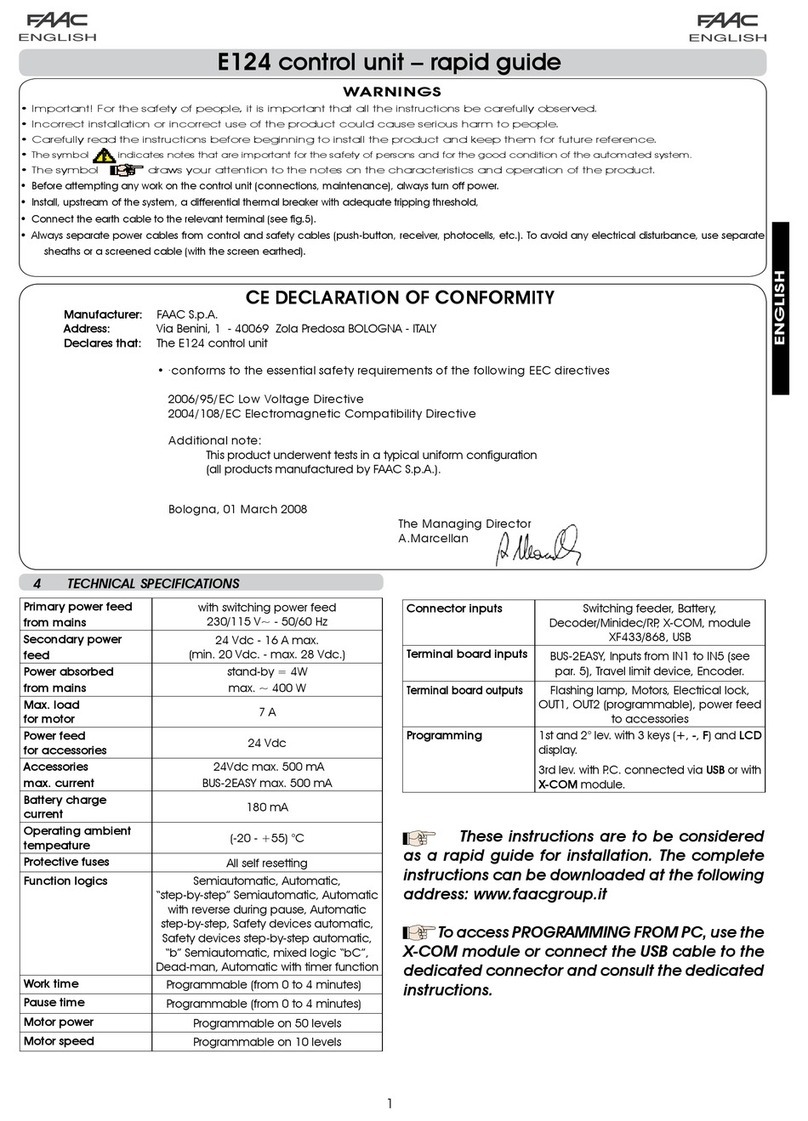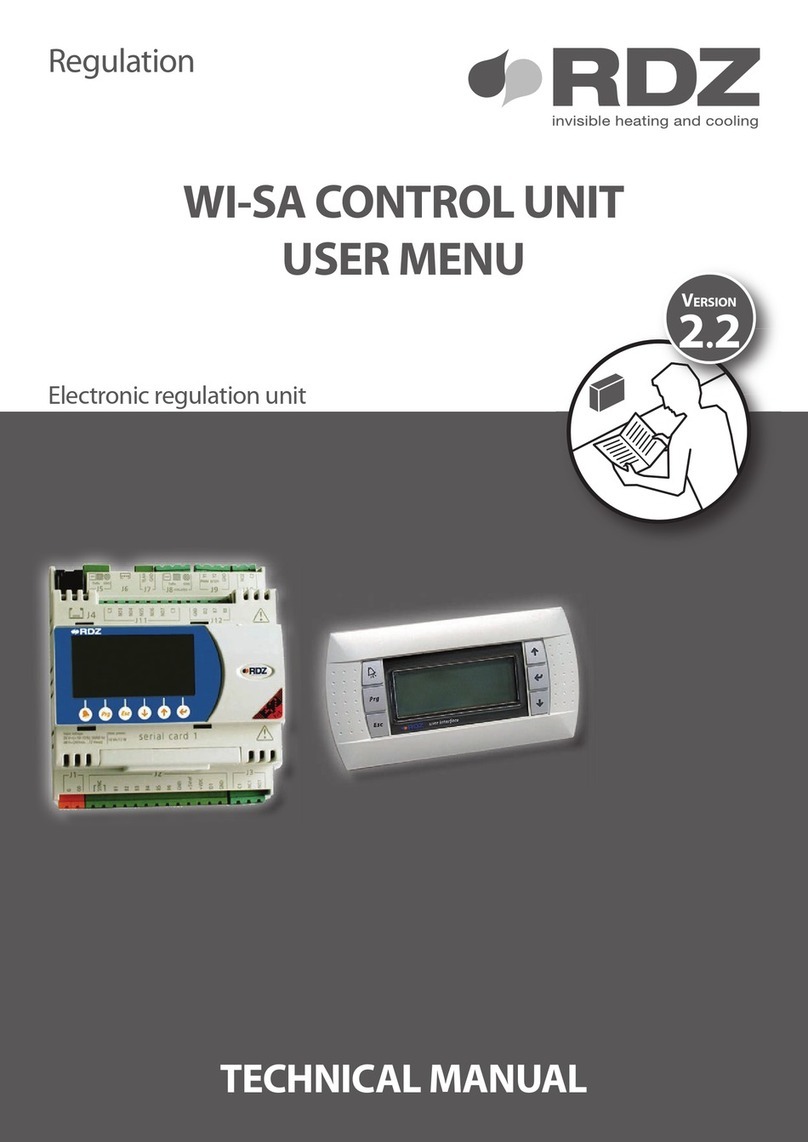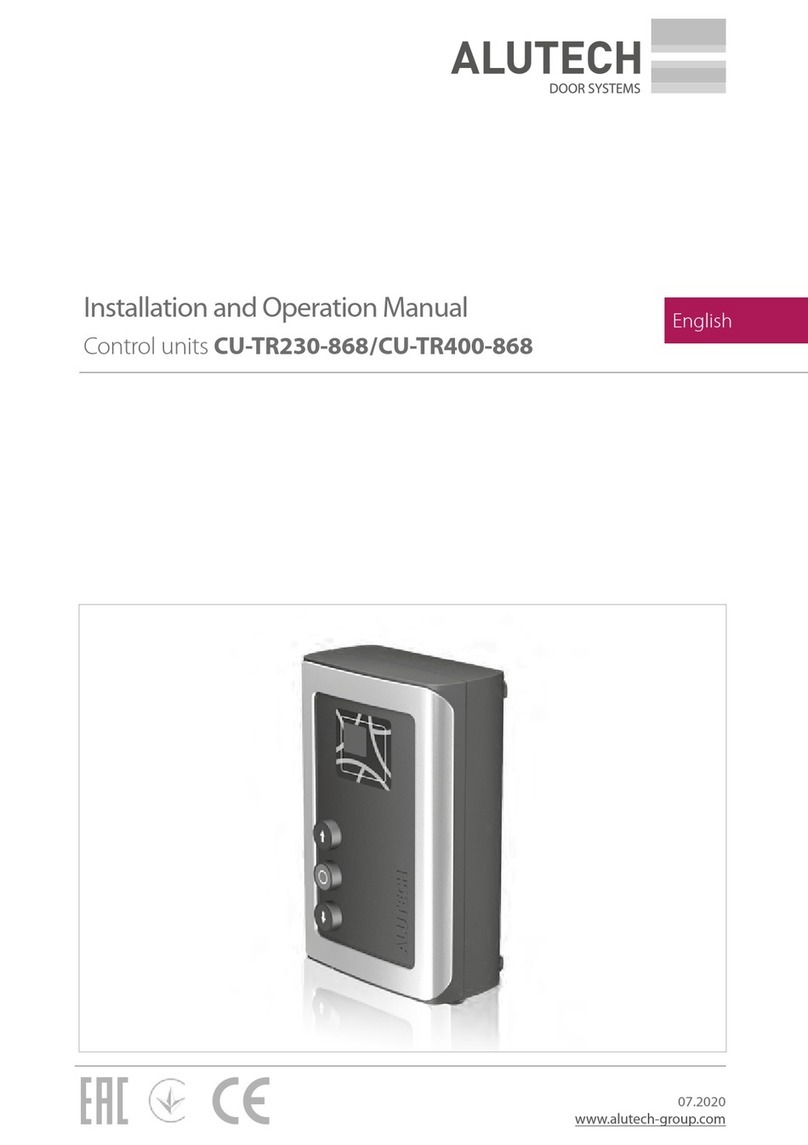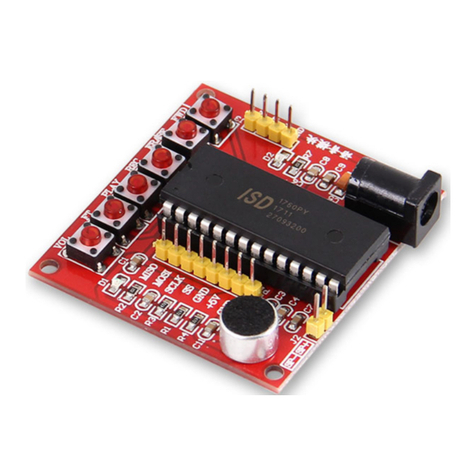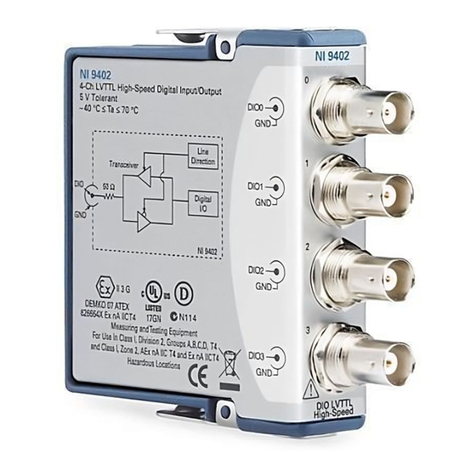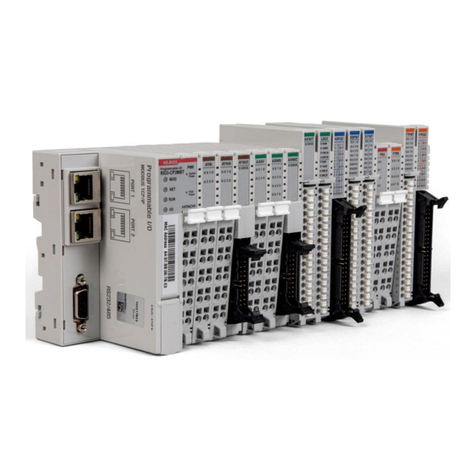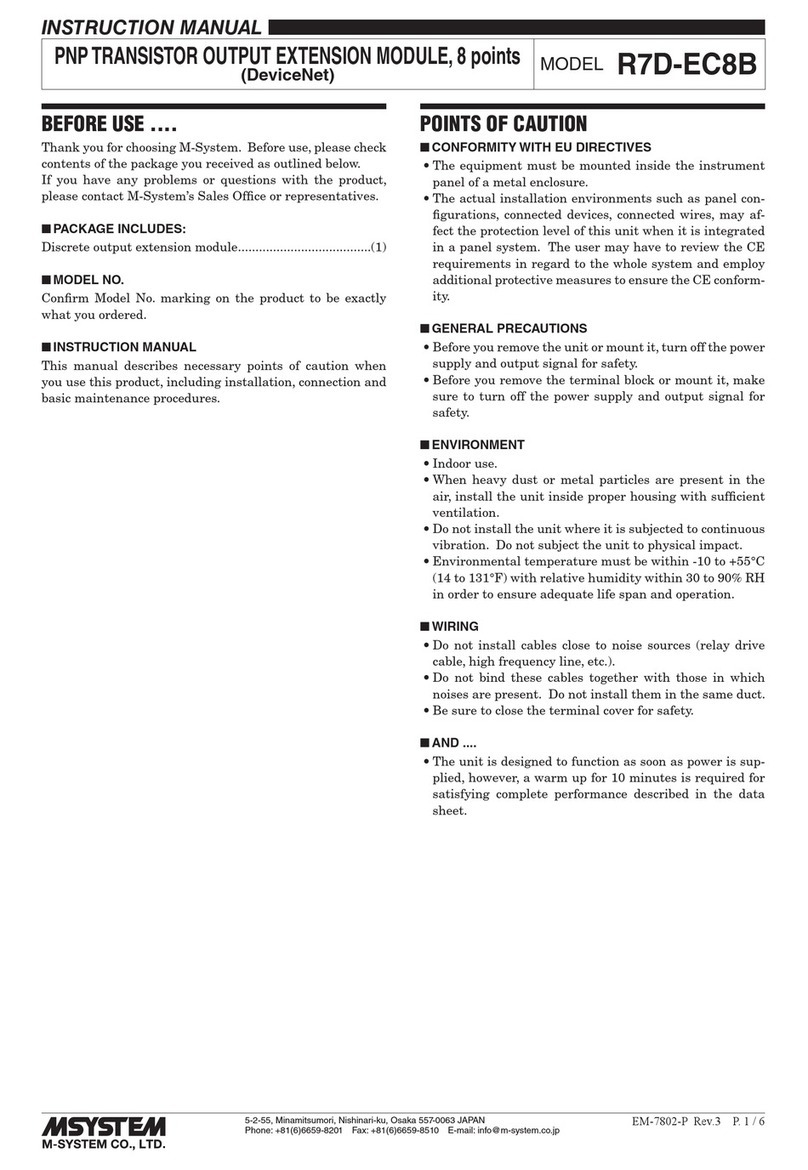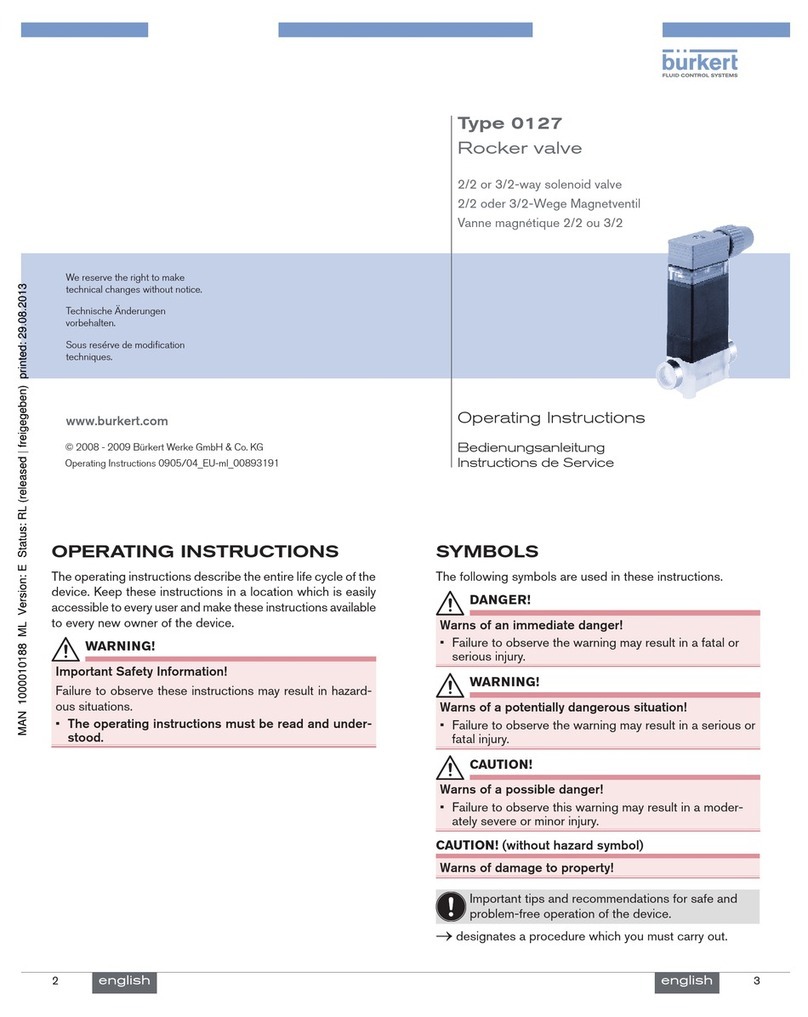tousek ST 80 Guide

Installation and connection manual
Barrier control unit ST 80, ST 80V

- 2 - tousek / EN_ST-80_80601606 / 25. 03. 2020
Index
General warning and safety details ........................................................................................................................ 3
1. Notes, general characteristics, control board layout ............................................................................. 4
2. Technical data, terminal assignment, connection notes ....................................................................... 5
3. Adjustments - overview ............................................................................................................................. 6
Programming keys, program menu, basic settings ........................................................................ 6
Menus ............................................................................................................................................ 7
4. Connections and adjustments .................................................................................................................. 8
Switches/buttons
......................................................................................................................................... 8
Barrier door contact for safety (terminal 30/54) ...................................................................... 8
Impulse switch (terminals 30/32)................................................................................................... 8
ISD channel 1 (I-loop 1: terminals 9/1 and 9/2)............................................................................. 9
ISD channel 2 (I-loop 2: terminals 9/3 and 9/4)............................................................................. 9
CLOSE-button (terminals 30/33) ................................................................................................... 9
STOPP-button (terminals 31/37) ................................................................................................... 9
Partial opening switch (terminals 30/34)...................................................................................... 10
Safety .......................................................................................................................................... 10
GPhotocell (contact: terminals 45/46) ............................................................................................. 10
Photocells - connection examples ...............................................................................10, 11
GMain closing edge (terminals 50/52)............................................................................................ 12
PHC/ISD-function ......................................................................................................................... 12
PHC/ISD-pause time .................................................................................................................... 12
PHC test ....................................................................................................................................... 12
Motor .......................................................................................................................................... 13
max. force..................................................................................................................................... 13
ARS response time ...................................................................................................................... 13
Speed OPEN................................................................................................................................ 13
Speed CLOSE.............................................................................................................................. 13
Soft runtime .................................................................................................................................. 13
Operating logic .......................................................................................................................................... 13
Impulse logic................................................................................................................................. 13
GOperating mode............................................................................................................................ 13
Pause time logic ......................................................................................................................... 13
Forced closing (only with ST 80V) ............................................................................................ 13
Lamps / Lights .......................................................................................................................................... 14
Prewarning OPEN (Signal lamp: terminals 10/11)....................................................................... 14
Prewarning CLOSE (Signal lamp: terminals 10/11)..................................................................... 14
Boom lamp CLOSE (terminals 70 (-) / 71 (+)) ............................................................................. 14
Peripherals .......................................................................................................................................... 15
Signal contacts ........................................................................................................................... 15
Magnetic clamp (terminals 74 (-) / 75 (+)) ................................................................................... 15
Diagnosis .......................................................................................................................................... 16
Status display ............................................................................................................................... 16
Delete positions............................................................................................................................ 16
Factory setting.............................................................................................................................. 16
Software version........................................................................................................................... 16
Serial number ............................................................................................................................... 16
Protocole ...................................................................................................................................... 16
Status Sensor............................................................................................................................... 16
5. Induction loop detector (optional) .......................................................................................................... 17
6. Radio receiver (optional) ......................................................................................................................... 18
7. Modul Status display (optional) .............................................................................................................. 19
8. Inbetriebnahme......................................................................................................................................... 20
9. Erroy analysis .......................................................................................................................................... 22
10. Dimensioned drawing .............................................................................................................................. 22
This manual is the sole property of the TOUSEK Ges.m.b.H. and may not be made available to competitors. All rights reserved. No part of it may be reproduced without our prior
written permission. We will not accept liability for any claims resulting from misprints or errors. This edition of the manual replaces all earlier publications of the same.

tousek / EN_ST-80_80601606 / 25. 03. 2020 - 3 -
Maintenance
• Maintenance works may only be carried out by qualied personnel.
• Maintenance and servicing of the complete barrier facility has to be carried out according to the barrier builder´s/
installer´s instructions.
• Check on a monthly basis whether force adjustment works properly.
GENERAL WARNING AND SAFETY NOTES
• These installation and operating instructions form an integral part of the product “control”. They have been specically
written for professional installers trained and skilled in the trade and should be carefully read in their full length before
carrying out the installation. They describe the proper installation and operation of the control unit only, not of the overall
device “automatic barrier”. After the installation this manual has to be handed over to the user.
• Installation, connection, adjustments, putting into operation, and servicing may only be carried out by trained profession-
als in full accordance with these installation- and operating instructions.
• Before carrying out works at the barrier-system, the power supply has to be turned o.
• The EU Machine Directive, laws and rules concerning the prevention of accidents, and laws and standards which are in
force in the EU and in the individual countries have to be strictly followed.
• The TOUSEK Ges.m.b.H. cannot be held liable for any claims resulting from disregards of the laws and standards in
force during the installation and operation.
• The packaging materials (cardboard, plastic, EPS foam parts and lling material etc.) have to be properly disposed of
in accordance with the applying recycling- and environmental procection laws. They may be hazardous to children and
therefore have to be stored out of children´s reach.
• The product is not suitable for installation in explosion-hazardous areas.
• The product may only be used in accordance with its original purpose, for which it has been exclusively designed, and
which is described in these installation and operating instructions. The TOUSEK Ges.m.b.H. rejects any liability if the
product is used in any way not fully conforming to its original purpose as stated herein.
• Children have to be instructed, that the gate facility as well as the belonging parts may not be used improperly, e.g. for
playing. Furthermore handheld transmitters have to be kept in safe places and other impulse emitters as buttons and
switches have to be installed out of children‘s reach.
• Before beginning with the installation the installer has to make sure that all mechanical components of the gate facil-
ity, like carrier prole/rail, gate frame and panels, guiding elements etc. are suciently supportive and resistant for the
purpose of gate automation.
• All electrical installations have to be made in full conformity with the applying rules and laws (e.g. using a fault current
circuit breaker, proper grounding etc.).
• An all-pole disconnecting main switch with a contact opening-gap of minimum 3 mm has to be foreseen.
• The electric motor heats up during operation. Therefore the device should only be touched after it has cooled o.
• After installation the proper function of the barrier facility and the safety devices has to be checked!
• The TOUSEK Ges.m.b.H. rejects any liability for claims resulting from usage of the product in combination with compo-
nents or devices which do not fully conform to the applying safety laws and rules.
• Only original spare- and replacement parts may be used for repair of the product.
• The installer has to inform the user about all aspects of the automatic operation of the complete barrier facility, as well as
about emergency operation. The installer further has to supply to the user all instructions relating to the safe operation
of the barrier facility. The installation and operating instructions also have to be handed over to the user.
Manufacturer´s Declaration of conformity:
The company TOUSEK Ges.m.b.H., Zetschegasse 1, 1230 Vienna/Austria, declares that the control unit ST 80,
ST 80V complies with the following direcives:
- Low Voltage Directive 2014/35/EU, incl. changes
- Electromagnetic Compatibility Directive 2014/30/EU, incl. changes
January 2019

- 4 - tousek / EN_ST-80_80601606 / 25. 03. 2020
1. General Barrier control unit ST 80, ST 80V
Components of control board
(K) terminal blocks
(S) Sensor connector
(D) Display connector or connection with optional
tousek-service-interface (TSI)
(B) terminals bus system
(ISD) Slot for optional I-loop detector (p.17)
(FE) Slot for optional receiver (p.18)
(ZM) Slot for optional
module „Status display“(p.19)
(T) Transformer
(F1) safety fuse F 5A
(F2) safety fuse F 2A
Control board layout
Control board characteristics
• For barriers with electromech. motors 230V and speed
sensor
•
Programming with illuminated LC display in englisch language
• Three operating modes (impulse, automatic, deadman)
• Automatic closing with adjustable pause time
• Runtime of operator is being automatically determined
• Separate speed adustment (OPEN/CLOSE)
• Adjustable soft stop time and speed
• Safety system ARS (autom. reversal system)
• Integrated contact edge evaluation
• Automonitoring of photocell
• Ouput for Photocells, magnetic clamp, signal lamp and boom
lamp kit
• Slots for optional radio receiver, loop detector, status display
module
•
F2
F1
K
FE
ZM
D
S
T
ISD
B
Important
The optional tousek- service-
interface must be connected with
socket (D) !
Attention
During connection, adjustment and maintenance works
please take care, that the electronic circuit board won´t
be damaged by moisture (rain).

tousek / EN_ST-80_80601606 / 25. 03. 2020 - 5 -
or
accessories,
max. 0,3A
Technical data
Barrier control unit
ST 80 ST 80V ST 80 ST 80V
Power supply 230Va.c. 50Hz
Ambient temperature
- 20°C bis + 70°C
max. permited motor capacity 230Va.c., 500W Protection class IP66
Signal lamp output 230Va.c., 100 W max. Speed sensor
Boom lamp output 24Vd.c. Forced closing
Magnetic clamp output 24Vd.c., 5W max. Article no. 12111590 12111600
Photocell output 24Va.c.
Optional equipment pluggable receiver • additional module for status of barrier • induction loop detector • other
impulse givers and safety equipment
2. Terminal assignment Barrier control unit ST 80, ST 80V
Warning
• Before taking o the control cover, the
mains switch must be turned o!
• If the control is power supplied, its inner part is under tension.
• In order to avoid electrical strokes, the safety regulations have to be
respected.
• The device may only be connected by trained professionals.
• The product is not suitable for installation in explosion-hazardous
areas.
• An all-pole disconnecting mains switch with a contact opening gap of
min. 3 mm has to be foreseen. The barrier facility has to be secured
according to the valid safety regulations!
• IMPORTANT: The control lines (buttons, radio, photocells, etc.) have
to be laid separately from the 230V lines (supply line, motors, signal
lamp).
L N
boom lamp
24Vd.c.
magnetic clamp
24Vd.c.
I-loop 1
I-loop 2
signal contact
“attendance”
ISD-channel-1/-2
grounding
230Va.c. Phase
50Hz zero line
Signal lamp 230V
max. 100W
41
42
43
44
45
46
50
52
31
37
32
30
33
30
34
30
54
20
21
22
23
80
81
0
1
2
10
11
L N
PHC-transmitter
PHC-receiver
8.k2
PHC-contact
contact edge
main closing edge
70
71
74
75
9/1
9/2
9/3
9/4
78
79
– + – +
PHC-supply
STOP-button
impulse switch
CLOSE-button
partial opening switch
barrier door contact
connection possibility
for motor condenser
(if not connected yet to the motor !)
The stop input has no emergency stop function! - In order to ensure the emergency stop function, provide
the supply line with an all-pole disconnecting emergency stop switch, that locks after actuation!
black (opening)
gray (blue)
brown (closing)
grounding
motor
connection

- 6 - tousek / EN_ST-80_80601606 / 25. 03. 2020
text display
ESC ENTER
• Before starting the programming, please choose the language. Use the buttons +or -to choose menu langu-
age and conrm with .
•
Note: Language selection can also be chosen by pressing the ESC button ( ) for 5s, from any position in menu.
Programming buttons Adjustment - overview
• For programming please remove cover (A) of control
device (loosen 2 bolts).
• The text display (T) informs you ou about operating status,
chosen menus and the adjustment of various parameters..
• The programming of the control is carried out with the help
of four buttons (+, -, (=Enter) and (=Escape).
• Scrolling through the available menu points (up/
down) or the adjustment of a parameter (value in-
crease/decrease) is carried out with buttons + and –..
AUTO-COUNT: when holding one of the buttons the value
changes automatically.
• When pressing the -button ea conrmation for entering the shown menu point, resp. for accepting the shown value
of a parameter is given.
• When pressing the -button you return to the superior menu point. Possibly changed adjustments of a parameter are
rejected with this button (the former values will remain).
• AUTO-EXIT: if no button is pressed during 1 min. then the menu switches automatically to the “ready” menu (wihtout
saving changed parameters).
3. Adjustments - overview Barrier control unit ST 80, ST 80V
• The program menu is divided into “BASIC SETTINGS” and “MENU CONTROL”
The dierent menu points are indicated as follows:
= selectable setting = factory settings = status display
Gshows the menu points which are in the “ BASIC SETTINGS”
BASIC SETTINGS
• When entering the programming of the control unit for the rst time you will see the BASIC SETTINGS
• Here the necessary adjustments which are necessary for the use of the operator/barrier can be set quickly.
• For advanced settings/programming please choose the menu point “menu (control)”.
MENU CONTROL
• For futher programming you will reach immediatly the MENU (CONTROL) (Basis settings are skipped)
• The menu control includes all kinds of settings.
Programming menu Adjustment - overview

tousek / EN_ST-80_80601606 / 25. 03. 2020 - 7 -
Main menu Sub layer Settings/adjustments
buttons/switches
see page 8–10
impulse switch OPEN/CLOSE/OPEN
OPEN
DEADMAN
in DEADMAN mode the
ISD channel1+2 with adjustment
„open“ has no function.
ISD channel 1 impulse
safety
attendance
ISD channel 2 impulse
safety
attendance
safety
see page 10–12
Gphotocell active
not active
Gmain safety edge active
not active
PHC/ISD function reverse during closing
during closing stop, then close
PHC/ISD pause time no inuence
abort pause time
restart of pause time
immediate closing after opening
PHC selftest active
not active
motor
see page 13
ST 80 ST 80V
max. force 50...100% [increment 5] = 100% = 100%
ARS-response time 0,15...0,95s
[increment 0,05]
= 0,50s = 0,50s
speed OPEN 55...100% [increment 5] = 90% = 100%
speed CLOSE 55...100% [increment 5] = 90% = 100%
soft stop way 0...5s
[increment 0,1]
= 1,5s = 1s
operating mode
see page 13
impulse mode without pause time extension
with pause time extension
Goperating mode impulse mode
automatic 1...255s [increment 1 ]
pause time logic no inuence
constant open in automatic mode
forced closing
(only with ST 80V)
active
not active
lights/lamps
see page 14
prewarning OPEN OFF, 1...30s = OFF
prewarning CLOSE OFF, 1...30s = OFF
boom lamp CLOSE OFF
blinking
illuminates
peripher. devices
see page 15
signal contacts status display 1
status display 2
magnetic clamp OFF, 0,1...1,0s = OFF
diagnosis
see page 16
status display status dispaly of all inputs
delete positions NO
YES
factory settings NO
YES
software version display software version
serial number display serial number
protocol display protocol messages
sensor status display sensor
Menu structure Adjustments - overview
+
–
Barrier control unit ST 80, ST80V
ESC ENTER
Note: some adjustments regarding function or operating logic can only be executed if barrier is closed and if the display shows „ready“.
At barriers with 6m boom length the settings for speed OPEN/CLOSE must not be more than
90% (= factory setting of ST 80)!

- 8 - tousek / EN_ST-80_80601606 / 25. 03. 2020
pushbuttons or key switches as well as external radio receivers with potential free make
contacts can be used as impulse emitters
• A general status display of all inputs can be found in the menu DIAGNOSIS / STATUS DISPLAY
Buttons/switches Connections and adjustments
GImpulse switch (terminals 30/32) Buttons/switches
OPEN / CLOSE / OPEN impulse repetition: After a
command of the impulse switch the motor starts an open
or close movement. If the impulse switch is pressed again
during this movement, the motor reverses.
•In this operation mode it is not possible
to stop the motor with the impulse
switch – it always travels until reach-
ing an end position. (Opened or closed
position).
• for the function OPEN/CLOSE/OPEN
we strongly suggest the installation of
a photocell!
OPEN: Only open commands are accepted of the impulse switch. Closing the barrier with the impulse switch is not
possible.
DEADMAN: The motor opens as long as the impulse switch is pressed – closing the barrier with the impulse switch is
not possible. As soon as the switch is released, the barrier boom stops. If deadman mode is selected, the radio receiver
is set out of order for safety reasons.
• If the impulse switch is set to DEAD MAN operation, then the partial opening switch works the same way.
With the impulse- or the partial opening switch the barrier is opened, with the CLOSE-button it is closed.
• IMPORTANT: Do not put into operation in dead man mode.
Select only after putting into operation (see page 20), if desired.
impulse switch
(e.g. key switch EPZ 1-1T)
4. Connections and adjustments Barrier control unit ST 80, ST 80V
Warning
• Before taking o the control cover, the
mains switch must be turned o!
• If the control is power supplied, its inner part is under
tension.
• In order to avoid electrical strokes, the safety regula-
tions have to be kept.
• The device may only be connected by trained profes-
sionals.
• The product is not suitable for installation in explosion-
hazardous areas.
• An all-pole disconnecting mains switch with a contact
opening gap of min. 3 mm has to be foreseen. The
barrier facility has to be secured according to the
valid safety regulations!
• IMPORTANT: The control lines (buttons, radio, pho-
tocells, etc.) have to be laid separately from the 230V
lines (supply line, motors, signal lamp).
2P1
30
32
The dierent menu points are indicated as follows:
= selectable setting = factory settings = status display
Gshows the menu points which are in the “ BASIC SETTINGS”
Barrier door contact (terminal 30/54)
• When opening the barrier door, a safety contatct is released which stops any
boom movement. The last indications on the display remain unchanged.
• If the door is closed again, the open position of barrier boom is being newly
learned/programmed.
30
54
barrier door contact

tousek / EN_ST-80_80601606 / 25. 03. 2020 - 9 -
As CLOSE-buttons you may use pushbuttons or
key switches as well as external radio receivers
with potential free make contacts can be used.
CLOSE-button (terminals 30/33) Buttons / switches
•A command with the CLOSE-switch engages clo-
sing of barrier. In deadman mode the barrier closes
as long as the CLOSE-switch is pressed/switched.
As soon as switch is released the barrier movement stops.
CLOSE-button
(e.g. key switch EPZ 1-2T)
2P1
30
33
ISD channel 1 (I-loop 1: terminals 9/1 and 9/2) Buttons / switches
open: when driving over I-loop 1 the barrier will open.
Safety: when driving over I-loop 1 the chosen setting under „LS/ISD-function“ (see p.12) is eected.
Attendance: through a potential free closing-contact
(terminals 78/79)
the driving over the I-loop 1 can be evaluated.
ISD channel 2 (I-loop 2: terminals 9/3 and 9/4) Buttons / switches
open: when driving over I-loop 2 the barrier will open.
Safety: when driving over I-loop 2 the chosen setting under „LS/ISD-function“ (see p.12) is eected
Attendance: through a potential free closing-contact
(terminals 78/79)
the driving over the I-loop 2 can be evaluated
Induction loops
• With the optional available induction loop detector (see page17) the use of induction
loops is made possible.
Connection I-loop 1: Kl. 9/1, 9/2, I-loop 2: Kl. 9/3, 9/4
• The function of I-loops has to be selected under „ISD channel 1“ and „ISD channel 2“ :
Note: if the function „open“ under menu point is selected and if the impulse switch is set to
„DEADMAN“, then the opening of the boom is omitted when driving over the I-loop !
9/1
9/2
9/3
9/4
I-loop 1
I-loop 2
STOP-switch (terminals 31/37) Buttons / switches
•when pressing the stop switch the gate stops in any
desired position.
As stop switch a break contact has to be used.
If no stop switch is connected, terminals 31/37 have to be wire-bridged.
31
37
The stop input has no emergency stop function! - In order to ensure the emergency stop function, provide
the supply line with an all-pole disconnecting emergency stop switch, that locks after actuation!
STOP-button
(e.g. switch KDT-1N)
31
37

- 10 - tousek / EN_ST-80_80601606 / 25. 03. 2020
As impulse emitters pushbuttons or key switches
as well as external radio receivers with potential
free make contacts can be used.
Photocells
• The control unit has a power supply connection for a 24V a.c. photocell (LS):
supply LS-transmitter: terminals 41/42 Note: in „closed“ position the terminals 40/41 are being switched
into energy saving mode (no current)
supply LS-receiver: terminals 43/44.
• The contact has to be closed when using powered and positioned photocells (opening contact).
Connection of the photocell contact: terminals 45/46
• When using two pairs of photocells please do not
install both photocell transmitters/receivers on the
same side (to eleminate interference between both) !
Exception: photocells with SYNC function allow the
installation of both photocell transmitters/receivers on
the same side without causing interference to each
other.
• Photocell self-test function:
The control board is equipped with a self-test function for the connected photocell. With an opening impulse (switch or
button) the transmitter of the photocell is switched o for a short time in barrier position „closed“ . Thus the photocell
receiver interrupts the contact 45/46 - so the control board veries the function of the photocell receiver. If this short
interruption at the photocell input is not carried out, the control board reports an error. The deactivation of the self-test
function is only allowed if the safety installations correspond to the category 3 !
• The exact function of the photocells depend on the programming of the control unit.
Photocell function please see menu point SAFETY / photocell function or photocell with pause time (p. 12)
• Youwillnddetailed information in the corresponding photocell manual.
Safety Connections and adjustments
GPhotocell (Contact: terminals 45/46) Safety
active: to be selected, if photocell should be triggered.
not active: to be selected, if photocell should not be triggered.
Standard:
transmitter1 receiver1
receiver2 transmitter2
with SYNC-function:
transmitter1 receiver1
transmitter2 receiver2
Important
• Jumper J of transmitter and receiver has
to be adjusted in the same way.
Photocell Tousek LS 26
as safety device
+
~
-
~
12/24V
J
+
~
-
~
12/24V
NC C NO
J
transmitter receiver
41
42
43
44
45
46
Partial opening (terminals 30/34) Buttons / switchesr
• same function as impulse switch.
when using with a second barrier this button has the
function of partial opening. pedestrian opening button
(e.g. key switch EPZ 1-1T)
P1
30
34
Photocell - connection examples

tousek / EN_ST-80_80601606 / 25. 03. 2020 - 11 -
To activate the SYNC-function you have to remove Jumper J in both
photocell transmitters!.
If the SYNC-function is inactive, the photocell transmitters and
receivers have to be mounted on dierent sides!
Important
• As the photocell LS 45/2 does not support SYNC-
function, the photocell transmitters and receivers
have to be mounted on dierent sides!
2 Photocells Tousek LS 45/2
as safety device
Photocells Tousek RLS 620
as safety device
24Va.c.
12–240V
a.c./d.c.
41
42
43
44
45
46
1 2
+ -
~ ~
12/24V
1 2 3 4 5
+ -
~ ~
12/24V
1 2
+ -
~ ~
12/24V
1 2 3 4 5
+ -
~ ~
12/24V
transmitter 1 receiver 1
receiver 2 transmitter 2
41
42
43
44
45
46
2 photocells Tousek LS 41 / LS 180
as safety device
J
J
N.O.
COM
N.C.
N.O.
COM
N.C.
transmitter 1 receiver 1
receiver 2 transmitter 2
41
42
43
44
45
46
SYNC
J
2 photocells Tousek LS 41 / LS 180 as safety
device with SYNC-function activated
N.O.
COM
N.C.
J
J
N.O.
COM
N.C.
transmitter 1 receiver 1
transmitter 2 receiver 2
41
42
43
44
45
46
SYNC
J

- 12 - tousek / EN_ST-80_80601606 / 25. 03. 2020
Safety edge (de)activation of main closing edge
• OBSTACLE DETECTION:
If the contact edge of the main closing edge is triggered,
an opening movement is eected for approx. 1s, then
the barrier stops.
That means: the barrier safety contact edge has to react on an obstacle during closing movement.
The connection has to be made on terminals 50/52.
Example: W 8,2kΩ nal resistance
1 nal edge
S to control board
50
52
main closing edge
Important
• During the initial learning phase of the barrier the contact edge should not be triggered. This would lead to an
error message.
main closing edge
function:
Safety during closing
GMain closing edge (terminals 50/52) Safety
ACTIVE: to be selected if the contact edge (8,2kOhm) of main closing edge should be evaluated.
NOT ACTIVE: to be selected if the contact edge (8,2kOhm) of main closing edge should not be evaluated.
1
W
S
PHC/ISD-function Safety
Reverse during closing: an interruption of the photocell/induction loop during closing makes the barrier reverse
(open). In automatic mode the barrier closes as soon as the pause time has run out. In impulse operation another
closing command has to be actuated.
Stop during closing, then close: an interruption of the photocell beam or induction loop during closing makes the
motor stop as long as the photocell/loop stays interrupted. After release of the photocell, the barrier closes.
PHC/ISD-Photocell/induction loop with pause time Safety
no inuence: the photocell/induction loop doesn’t have any inuence on the pause time in automatic mode.
Stop of pause time (immediate closing): in automatic mode an interruption of the photocell/induction loop during
pause time shortens the pause time. After release of the photocell the barrier starts closing.
Restart pause time: in automatic mode an interruption of the photocell or induction loop during pause time, restarts
the pause time. As soon as the pause time has run out, the barrier closes.
Immediate close after opening: If the photocell is interrupted during the opening movement, the barrier starts closing
as soon as it reached the open end position.
PHC-Test Safety
active: photocell self-test is executed with an opening impulse (switch, button) in gate position „closed“.
not active: photocell self-test is not executed.
Attention
• The photocell self-test can only be deactivated by selecting „not active“.
• The deactivation of the self-test function is only permitted if the safety installations correspond to the
category 3 !

tousek / EN_ST-80_80601606 / 25. 03. 2020 - 13 -
Operating logic Connections and adjustments
Impulse logic Operating logic
without pause time extension: a command in automatic mode during pause time does not lead to a pause time
extension. The impulse is being ignored.
with pause time extension: a command in automatic mode during pause time restarts pause time.
GOperating mode Operating logic
Impulse mode: Impulse through impulse switch/button or CLOSE-button to start closing of barrier.
Automatic mode, pause time 1-255s adjustable [increment 1]: barrier closes automatically after the adjusted
pause time.
Pause time logic Operating logic
no inuence
Permanent open in automatic mode: if this function is activated, the control unit goes from automatic mode into impulse
modewithactivated pause time through impulse in open barrier boom position for this cycle ,henceifbarrier isopenthen
an impulse will end the automatic mode - the barrier remains open. Only the next impulse will close the barrier and the control
unit goes back to automatic mode. With this function e.g. the entrance to a company site can remain open during the day (1st
impulse in barrier open position) and closed in the evening (2nd impulse). The control board switches back to automatic mode
(autom. opening and closing of barrier).
Forced closing (only with ST 80V) Operating logic
active: this function causes that a manually released boom goes immediately back to closure.
not active: the forced closing is deactivated
Attention
Please check the adjustments to be in compliance with the valid safety regulations and standards that have to
be strictly followed !
Motor Connections and adjustments ST 80(V)
max. force 100% (factory setting) Motor
50–100% adjustable [increment 5]: determines the max. possible motor force.
ARS response time 0,5s (factory setting) Motor
0,15–0,95s closing speed adjustable [increment 0,05]: determines, in which time the AR-System responds. The
lower the value, the more sensitive the sensor will react.
Speed OPEN 90% for ST80 / 100% for ST80V (factory setting) Motor
55–100% adjustable [increment 5]: determines the speed of motor during opening.
At barriers with 6m boom length the setting for speed OPEN must not be more than 90% (= factory
setting of ST 80)!
Speed CLOSE 90% for ST80 / 100% for ST80V (factory setting) Motor
55–100% adjustable [increment 5]: determines the speed of motor during closing.
At barriers with 6m boom length the setting for speed CLOSE must not be more than 90% (= factory
setting of ST 80)!
Soft runtime 1,5s for ST80 / 1s for ST80V (factory setting) Motor
0–5s adjustable [increment 0,1]: determines the time of softstop.

- 14 - tousek / EN_ST-80_80601606 / 25. 03. 2020
Tousek boom lamp kit
• The barrier can be equipped with a boom lamp kit 24Vd.c.,max. 5W, consisting of 6 lamps.
• Note: The kit for round booms (Product No. 13710250) must be connected via a specially dimensioned series resistor
(R boom lamp) to the control board ST 80 (see gure), the kit for at booms (Art.Nr. 13710190) without a resistor.
Connection of boom lamp kit
• ATTENTION: turn o power supply!
• When using the kit for round booms (Prod. No. 13710250)
slide the connecting cable of the boom lights into the ope-
ning of the protective resistor and x it with Crimp wrench.
• Connect to terminals 70/71 of the control ST 80.
70
71
74
75
9/1
9/2
9/3
9/4
78
79
R boom lamp
x
Light / Lamps Connections and adjustments
Warning
• Before connection works please turn o the main power switch !
• Safety rules please see page 8 !
Signal lamp
• A signal lamp 230V, max. 100W
can be connected at
terminals 10/11.
Prewarning OPEN (signal lamp: terminals 10/11) Light / Lamps
turned o
1–30s adjustable: Before each opening movement the
signal lamp/ ashing light is activated for the adjusted
time.
Prewarning CLOSE (signal lamp: terminals 10/11)
turned o
1–30s adjustable: Before each closing movement the
signal lamp/ ashing light is activated for the adjusted time.
10
11
Boom lamp CLOSE (terminals 70 (-) / 71 (+)) Light / Lamps
• The boom lamp blinks during movement and stops blinking in open position.
• For the prewarning time the adjustments for the signal lamp are valid
• For closed position you can choose one of the following functions:
OFF
blinks: boom lamp blinks in closed position
illuminates:
boom lamp illuminates in closed position

tousek / EN_ST-80_80601606 / 25. 03. 2020 - 15 -
Magnet for boom xing
• The barrier can be equipped with a magnet 24Vd.c., 5W max. for xing the boom in closed position. This is connected
via a series resistor (R magnet) to the controller ST 80.
Connection of magnet
• ATTENTION: turn o power supply!
• The magnet has to be connected to the control ST 80 via
a protective resistor.
This protective resistor is designed for the tousek
adhesive magnets GD 70.
• Slide the connecting cable of the magnet, as shown in
picture, ldet, into the opening of the resistor and x it with
Crimp wrench.
• Connecting cables and series resistor have to be
connected ,as shown, with terminals 74(–) / 75(+) of the
control board.
Pay attention to polarity.
70
71
74
75
9/1
9/2
9/3
9/4
78
79
R Magnet
x
24V
– +
Peripherals Connections and adjustments
Signal contacts
• Requirement for barrier status display 1 or 2 is the
availability of the optional module (p.19).
• max. contact load: 1A 24Va.c./d.c.
Signal contacts (Description status display module see page 19 ) Peripherals
Status display 1: with the two potential free signal contacts 1 and 2 the adjustments of the barrier can be evaluated.
Status display 2: with the two potential free signal contacts 1 and 2 the adjustments as well as the movement direction
of the barrier can be evaluated.
function Signal-
contact 1
Signal-
contact 2
Barrier status display
1
Barrier in CLOSE-Position 1 0
Barrier in OPEN-Position 0 1
2
Barrier in CLOSE-Position 1 1
Barrier opens or has been
stopped in the process 1 0
Barrier closes or has been
stopped in the process 0 1
Barrier in OPEN-Position 0 0
0 = Signal contact open, 1= Signal contact closed
Signal contact-
modul
90
91
92
93
Signal contact 1
Signal contact 2
Magnetic clamp (terminals 74 (-) / 75 (+)) Peripherals
OFF
0,1–1s adjustable: before boom opening the magnetic clamp is being turned o - the boom opens only after the
adjusted time.
In closed position the magnetic clamp is automatically switched on.

- 16 - tousek / EN_ST-80_80601606 / 25. 03. 2020
The mechanical stops have to be placed so
that possibly existing safety contact edges
can not be triggered, as this would lead to
an error message.
Note: The factory settings of the single menu
points are marked with in this manual
Diagnosis Connections and adjustments
Status display Reset / Diagnosis
Status display on text display for inputs like photocell, contact edge, stop switch, impulse switch ....
I impulse button
P partial opening
CCLOSE-button
SSTOP-button
PH photocell contact
ME contact edge at main safety edge
1induction loop 1
2induction loop 2
Delete positions Reset / Diagnosis
NO: does not delete the end positions “closed”
and “open”
YES: the determined end positions are beeing deleted.
Note: the end positions will be determined after new impulse.
Factory setting Reset / Diagnosis
NO: no reset back to factory settings
YES: reset back to factory settings and delete the
adjusted limits.The end posistions (limits) will be
redetermined after impulse.
Software version (control function) Reset / Diagnosis
shows the software version on display
Serial number (control function) Reset / Diagnosis
shows the serial number on text display
Protocole Reset / Diagnosis
shows the protocole list on display: all events that take place are protocolled in this list.
with the buttons +and -the single events can be seen:
Status Sensor (control function) Reset / Diagnosis
Degree and signal strength of rotation speed sensor is shown on display.
All inputs okay.
e. g.
$$$$$$$$$$$$$$$$
$$$$$$$$$$$$$$$$
T -00 00:00:00.0
Event
With * the protocole beginning
hence the end is shown
event type
Time since the last event:
DAYS HOURS : MINUTES : SECONDS
$$$$$$$$$$$$$$$$
$$$$$$$$$$$$$$$$
I P C S PH ME 12 $$$$$$$$$$$$$$$$
$$$$$$$$$$$$$$$$
I P C S PH ME 12
Impulse-, pedestrian - and close button not triggered.
STOP-button and photocell are triggered.
Contact strip (main closing edge) not connected or defect.
induction loop 1, 2 not triggered.
$Status: not triggered
$-Status: triggered
$xStatus: contact strip not connected or defect
$oStatus: contact strip or photocell deactivated in menu

tousek / EN_ST-80_80601606 / 25. 03. 2020 - 17 -
Important
• The device is for plugging onto a compact control board. The compact control board has to be built
into a separate housing with IP54-insulation.
• After each device setting a readjustment is carried out automatically. After a change in the frequency
(DIP switch 1: OFF / ON) the Reset-button (RES) has to be pressed.
• Special notes for loop:The safe function of the device depends essentially on the correct techni-
cal installation and of the laying of the loop wire, as these are the sensors of the device. The loop
should not be mechanically loaded or moved. The loop feed line has to be twisted for approx. 20
to 50 times per meter and separated from any voltage carrying lines.
•
The loop connection has to be made to terminals 9/1-9/2 (= loop 1) and 9/3-9/4 (= loop 2).
• Function of I-loops: depending on settings under „button/switch / ISD channel 1 (2)“, „Safety /
LS/ISD-function“ and „Safety / LS/ISD-pause time“.
• Detailed informations can be found in the corresponding manual.
• All detector settings can be made easily with the rotary
switches (D1) for channel 1 and (D2) for channel 2 as well
a s the DIP-switches (DIP). see corresponding manual.
Factory settings (DIP1–DIP8 = OFF, D1 and D2 = 4).
DIP DIP-switch
RES Reset-button
MMolex bar
D1 rotary switch
channel 1
D2 rotary switch
channel 2
LED´s for
channel display
G1 (green) 1 detection
G2 (green) 2
R1 (red) 1 defective
R2 (red) 2
PWR (yel-
low)
blinking when adju-
sting / power
RES DIPG2D2D1 G1PWR
M
15 .1
9 .7
412
Rotary switches D1, D2 and DIP
in factory setting
RESDIP D2 D1G2 G1 PWR
R2 R1
The Reset button (RES) has 2 functions which can be activated via the dierent duration of the key pressure:
• Adjustment: short key pressure (< 2s), Initialization of all activated loop channels.
• Reset: average duration of the key press (> 2s), reset the detector, subsequent initialization of all channels.
9/1
9/2
9/3
9/4
I-loop 1
I-loop 2
5. 2 channel induction loop detector ISD 6 (optional) ST 80(V)
ST 80(V)
ISD
Insert the board of the induction loop de-
tector on the slot (ISD) of the control board.
ISD
Mounting and installation
Switch o the power supply. open the control board housing and plug the I-loop detector onto the connection
slot as shown on picture.

- 18 - tousek / EN_ST-80_80601606 / 25. 03. 2020
Important
• With the use of the 2-channel-receiver the second
channel takes over the function of the partial opening
entry mode switch.
• For programming of receiver please see manual for
radioreceiver.
• Turn o power supply.
• Open cover of control unit
• Receiver board (E) RS433/868-STN1 (1-channel) or
RS433/868-STN2 (2-channel) into the connection slot
(FE), as shown in picture.
• For range extension an external antenna FK433 or FK868
can be connected.
FE
6. Connecting the receiver (optional) Barrier control unit ST 80, ST 80V
connection slot for radio
receiver
E

tousek / EN_ST-80_80601606 / 25. 03. 2020 - 19 -
Important
• The optional module „Status display“ has to be plugged onto the connector slot (ZM) of control board and
enables the evaluation of boom position or boom movement.
• Function of module: depending on the adjustments under „Peripherals / Signal contacts“ (p.15).
Connection the module
• Turn o the power supply !
• Plug in the „status display“ module into the
slot (ZM) .
• With the potential free signal contacts K1 (term. 90/91) and K2 (term. 92/93) the barrier status can be evaluated in
two ways (see menu point Signal contacts).
• Contact load: 24Va.c./d.c., max. 10W
7. Status display module (optional) Barrier control unit ST 80, ST 80V
9091 9293
Signal contact K1
Signal contact K2
ZM

- 20 - tousek / EN_ST-80_80601606 / 25. 03. 2020
Important: preparation works
• Connect control panels, safety devices to the motor under consideration of the safety regulations .
Attention: if no stop switch is connected then the terminals 31/37 have to be bridged.
• Turn on the equipment (correct connection is preconditioned).
• Important: Putting into operation in Impulse mode (standard setting) and not in dead man mode.
• During initial operation the choice of language is the rst adjustment, then in the “Basic settings” the adjustment of
most important operator settings and after the system test, the automatic detection of limit positions of boom is made.
$$$$$$$$$$$$$$$$
$$$$$$$$$$$$$$$$
Photocell
$$$$$$$$$$$$$$$$
$$$$$$$$$$$$$$$$
Main safety edge
3
3
4
4
5
$$$$$$$$$$$$$$$$
$$$$$$$$$$$$$$$$
Photocell
active
$$$$$$$$$$$$$$$$
$$$$$$$$$$$$$$$$
Main safety edge
active
$$$$$$$$$$$$$$$$
$$$$$$$$$$$$$$$$
Photocell
not active
$$$$$$$$$$$$$$$$
$$$$$$$$$$$$$$$$
Main safety edge
not active
change ? YES
conrm
change ? YES
conrm
BASIC SETTINGS
• For setting the most important adjustments for initial operation of motor.
• Can be selected during initial operation (hence when restoring the factory setting).
• All safety devices are activated when leaving factory (see menu page 7).
• The next programming adjustments are made in the main settings menu (see page 6, 7).
Factory settings
8. Putting into operation Barrier control unit ST 80, ST 80V
$$$$$$$$$$$$$$$$
$$$$$$$$$$$$$$$$
Language:
Englisch
$$$$$$$$$$$$$$$$
$$$$$$$$$$$$$$$$
Tousek Digital
2
1
2
3
$$$$$$$$$$$$$$$$
$$$$$$$$$$$$$$$$
Basic settings
scroll conrm
conrmation
LANGUAGE SELECTION
• Can be selected during initial operation (hence after reset to factory settings).
• Can be also chosen by pressing the ESC button
( )
for 5s, from any position in menu.
Other manuals for ST 80
1
This manual suits for next models
1
Table of contents
Other tousek Control Unit manuals
Popular Control Unit manuals by other brands
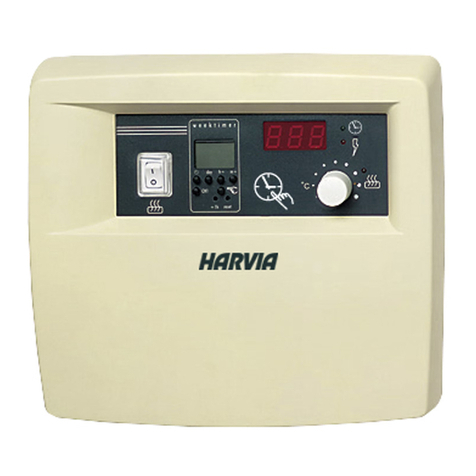
Harvia
Harvia C260 manual

Mainstream Engineering
Mainstream Engineering QwikSwap X3 installation instructions

DeZurik
DeZurik BAW AWWA Installation, operation and maintenance manual
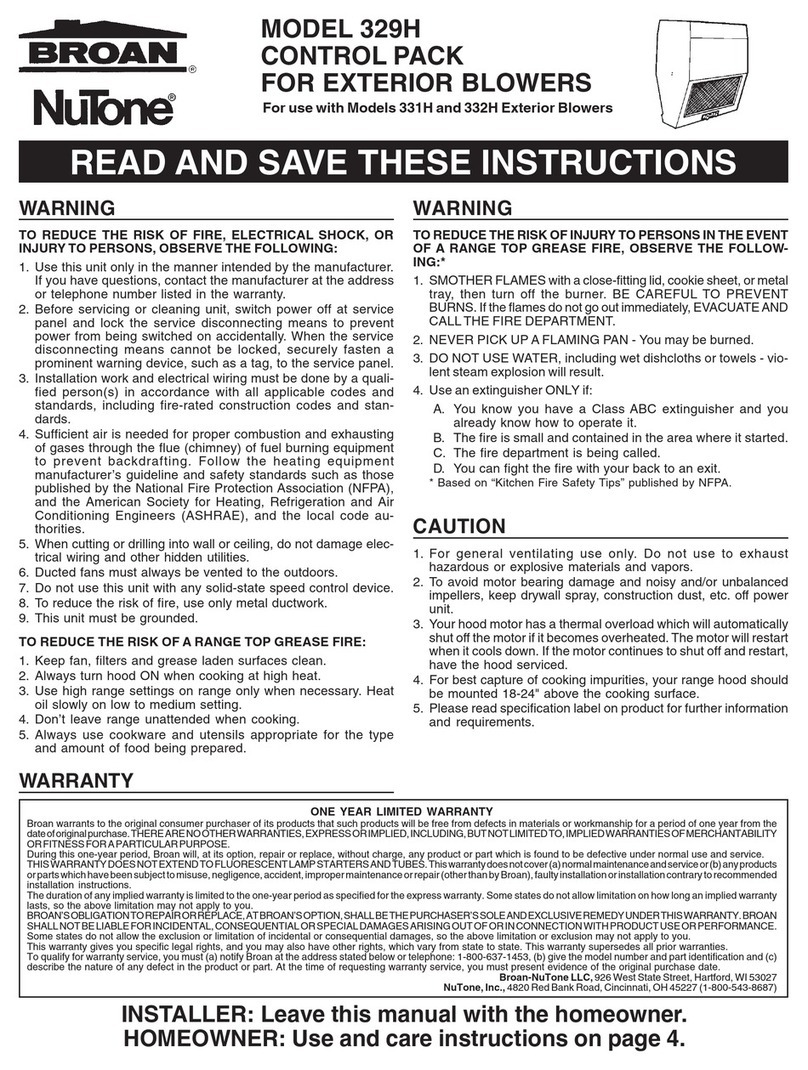
NuTone
NuTone 329H instructions
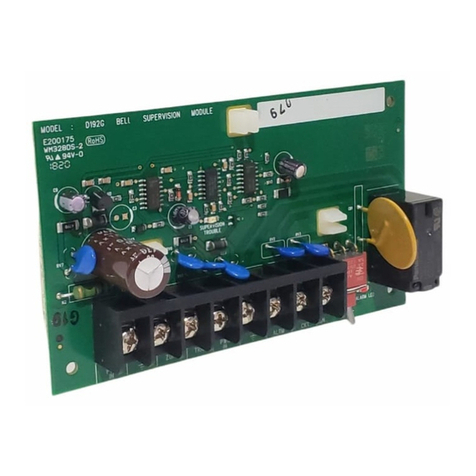
Bosch
Bosch D192G installation manual
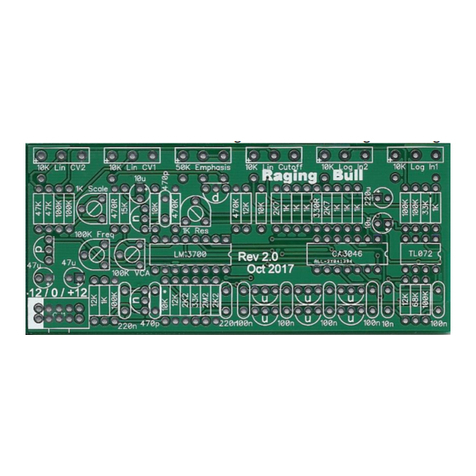
Frequency Central
Frequency Central Raging Bull 2.0 Build documentation


